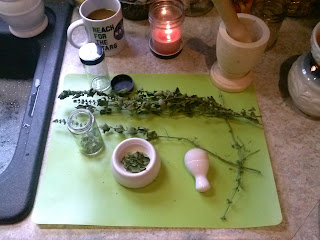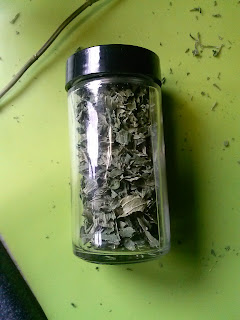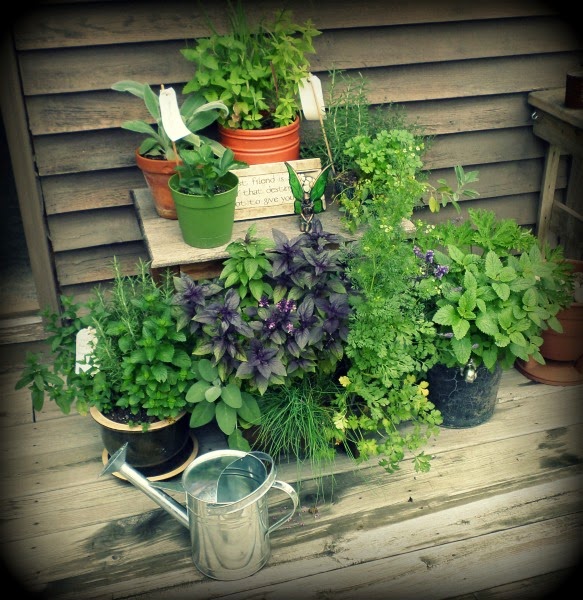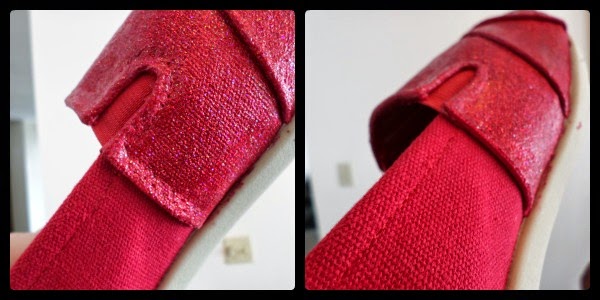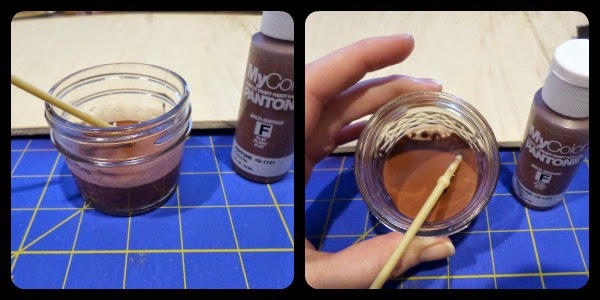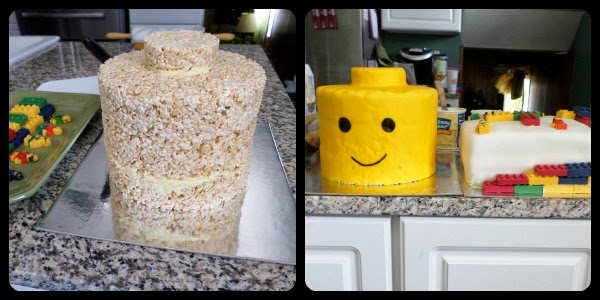We had our first visit to an apple orchard/pumpkin patch in October! We were a little late to nab pumpkins from the pumpkin patch(though there were plenty left that the farm had already pick and set up in their store)but we were able to pick end of season apples from the orchard. We came out with 64 apples in our half bushel of varying flavors and sizes ~ Red Delicious, Granny Smith and Jonathon. While the mix of colors were appealing while preparing all that we were able to make with our apple haul, the mix of flavors worked out very well for our first time making apple butter(credit goes to the husband unit and awesome friend who helped cut and core apples for me to cook with).
 |
| The local apple orchard/pumpkin patch we went to was Gull Meadows Farm ~ their Halloween decorations were everywhere and were amazing, and I'm really hoping to visit once more before Thanksgiving. |
Being new to making any kind of fruit preserve or butter I went scouting for recipes and settled on giving these two a try:
Crockpot Apple Butter and
Vanilla Rum Apple Butter
The crockpot apple butter was a really nice and simple recipe that didn't over flavor the apples at all, and the vanilla rum recipe was very strong smelling(I used my favorite spiced rum) but as it cook the smell of the rum gave way for a strong vanilla and apple scent, and the taste is fantastic.
 |
| The Vanilla Rum Apple Butter calls for Apple Cider which you will be boiling your apples in first ~ my crock pot has stove top settings so I was able to keep everything to one pot ~ between the apple cider and the rum this recipe calls for a lot of liquids and did not thicken as well as the Crockpot Apple Butter. It is amazingly delicious none the less. |
Just going to throw it out there now, I did not read the directions on either recipe thoroughly; I focused more on their ingredient list and just had at it, at least with the first batches. I also didn't remove the skin from the apples since I was going to puree each batch anyway. Leaving the skins on created a really nice apple sauce texture while each batch cooked down and makes for a chunky apple butter(I keep saying apple butter but really I ended up with something more on par with apple preserves, so still delicious)and if you don't want a chunky apple butter pulsing it through a food processor makes for a smooth and creamy texture.
 |
| Crockpot Apple Butter does not make a lot of butter once the apples cook down, but the recipe is meant to be easy to make and doing more than one batch isn't hard to do. |
So, some things I did differently, starting with the Crockpot Apple Butter: I did not peel the apples nor did I bother to really cut them into small cubes and the butter came out just fine. I also did not stick strictly to the cook times, instead I went for something better for my own pacing as I was making a different batch of apple butter at the same time, as well as cooking another apple treat.
As for the Vanilla Rum Apple Butter, things I did differently started with again not peeling the apples; the peels create a chunky texture that isn't bad as it doesn't alter the taste, and one time through a food processor made everything nice and smooth anyway. Plus the apples were thoroughly cleaned before cooking so it didn't really hurt anything to skip that one step with each recipe.
After bringing the cider and apples to a boiling in the crock pot the recipe's directions were completely forgotten about and every other ingredient was dumped right on top of the apples and boiling cider and then set to cook at the same pace as the first recipe. Because I am a great cook.
 |
| The Vanilla Rum Apple Butter makes much more the the Crockpot Apple Butter, but between the two recipes I ended up with maybe around 14 half pint jars worth of butter. |
|
|
With the amount of apples we picked, I ended up with enough for 24 apple turnovers and almost 30 half pint jars worth of apple butter. Since there were more than enough to make a second batch of each apple butter I did try following the directions a little more closely the second time around, and I ended up pretty much ruining the second batches.
 |
| This is just before the Vanilla Rum Apple Butter was the consistency of apple sauce ~ all we really needed to puree were the apple peels. |
The Vanilla Rum Apple Butter 'requires' the apples to be blended after they've boiled in cider for the nice smooth texture and then mixed with sugar to slow cook for 8 hours and then be mixed with the rest of the ingredient list to cook for one more hour. Doing this created a really runny apple butter and slow cooking it further to give it more time to thicken did not work. In the case of the Crockpot Apple Butter slow cooking on the lowest temperature did not prevent the apple butter from burning and leaving a scored apple residue on the side of my newer crock pot that I'm still fighting to clean off. I was able to save each batch by mixing them together - the thickness of the burnt apple butter fixed the runny vanilla rum mixture, while the taste of the vanilla rum mixture saved the other apple butter. After lucking out and still getting the same amount of jars worth of apple butter I will probably stick to my lack of reading all instructions method for next year's apple season.
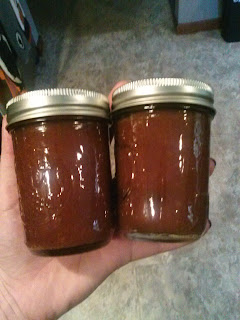 |
| 4 of the jars were mixed with raisins ~ the raisin apple butters are great with peanut butter on toast. |
Since we don't have canning equipment I needed to find an alternative method for that as our apple butters were made over a month before Thanksgiving, and we intended for these to be a Thanksgiving Day treat was well as have some on hand for Christmas gifts. The method I found was easy and worked great for sealing the jars. Glass jars heat up in the oven, set to 200 degrees, and jar lids are boiled. While the apple butter was still hot I spooned them into jars, leaving about a 1/4 inch space at the top, dried a lid pulled out of boiling water, twisted on the lid's ring(which I didn't bother heating) and set the jars upside down on the stove where I left them for several hours untouched. After checking the tops I found that every jar had sealed perfectly and stored them away for the holidays.
You can find the canning tutorial I used
here.












